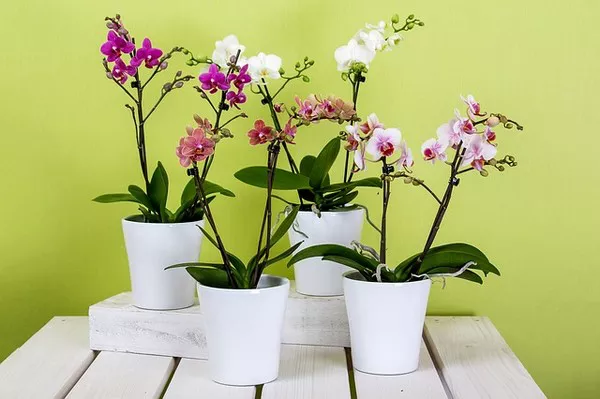Houseplants bring beauty, freshness, and a touch of nature into indoor spaces. However, the presence of gnats can turn this green haven into a frustrating ordeal for plant enthusiasts. Gnats, small flying insects commonly found in households, are not only annoying but can also pose a threat to the health of your houseplants. In this article, we will explore effective strategies to keep gnats out of your houseplants and maintain a thriving indoor garden.
Understanding the Gnat Problem
Gnats, often mistaken for fruit flies due to their similar appearance, are attracted to the moisture and organic matter present in potted plants. These pests lay their eggs in the soil, and the larvae feed on decaying organic material and plant roots, causing harm to the plant’s health. Gnats can quickly multiply, leading to infestations that are both unsightly and detrimental to the plants.
1. Choose the Right Potting Soil
One of the key preventative measures to avoid gnat infestations is starting with the right potting soil. Opt for a well-draining mix that doesn’t retain excess moisture. When soil is too damp, it becomes a breeding ground for gnats. A mix that contains perlite or vermiculite helps improve drainage and aeration, reducing the likelihood of gnat eggs finding a suitable habitat.
2. Allow Proper Soil Drying
Overwatering not only harms your plants but also invites gnats to settle in the overly moist environment. To combat this, ensure that you water your plants appropriately. Before watering, check the moisture level of the soil by inserting your finger about an inch deep. If the soil feels dry at this depth, it’s time to water. By letting the top layer of soil dry out between watering sessions, you discourage gnat reproduction.
3. Implement Yellow Sticky Traps
Yellow sticky traps are a simple yet highly effective tool to monitor and control gnat populations. These traps are coated with a sticky substance and colored yellow, which attracts adult gnats. As the gnats land on the traps, they become trapped and unable to reproduce. Place these traps near your houseplants, and remember to replace them regularly as they become covered with insects.
4. Practice Good Hygiene
Maintaining cleanliness in your indoor garden is crucial to preventing gnat infestations. Remove fallen leaves and debris from the soil surface, as these materials can serve as breeding sites for gnats. Additionally, regularly clean saucers and trays beneath your pots to prevent standing water, which can encourage gnats to lay their eggs.
5. Introduce Natural Predators
Nature often provides its own solutions. Consider introducing beneficial nematodes or predatory mites to your soil. Beneficial nematodes are microscopic worms that feed on gnat larvae, effectively breaking the life cycle of the pests. Predatory mites, on the other hand, consume both adult gnats and their larvae. These natural predators can significantly reduce gnat populations without resorting to chemical solutions.
6. Bottom Watering Technique
Changing your watering technique can also deter gnat infestations. Instead of watering from the top, try bottom watering. Place the potted plant in a tray of water and allow it to soak up moisture through the drainage holes at the bottom. This method ensures that the top layer of soil remains dry, making it less appealing for gnats to lay their eggs.
7. Allow Soil Aeration
Gnats thrive in compacted and poorly aerated soil. Regularly aerate the soil by gently loosening the top layer with a fork or a small tool. This practice not only enhances drainage but also disrupts the gnat breeding cycle by exposing their eggs to air and light.
8. Cinnamon as a Natural Repellent
Cinnamon has natural antifungal and antibacterial properties, making it an effective gnat repellent. Sprinkle a thin layer of ground cinnamon on the soil surface to discourage gnats from laying eggs. However, be cautious not to overapply, as excessive cinnamon can also disrupt the soil’s pH balance.
9. Isolate New Plants
When introducing new plants into your indoor garden, quarantine them for a few weeks before placing them with your existing plants. This isolation period allows you to monitor the new plants for signs of pests, including gnats. If the new plants are infested, you can address the issue before it spreads to your entire collection.
10. Utilize Sand or Grit Mulch
Another effective preventive measure is to use a layer of sand or fine grit as a top dressing for your potted plants. This not only enhances the appearance of your plants but also creates an inhospitable environment for gnats. The sand or grit prevents gnats from easily accessing the soil to lay their eggs.
Conclusion
Maintaining a thriving indoor garden requires a combination of care, attention, and preventive measures. Gnats, though small in size, can wreak havoc on your houseplants if left unchecked. By implementing the strategies outlined in this article, you can successfully keep gnats out of your houseplants and create a healthier and more enjoyable indoor gardening experience. Remember that consistency is key, and a proactive approach will help you enjoy the beauty of your indoor oasis without the nuisance of gnats.


